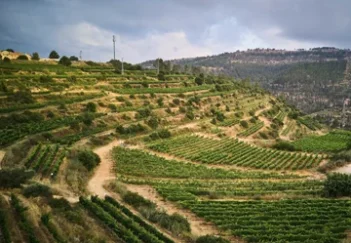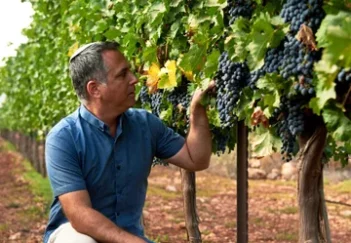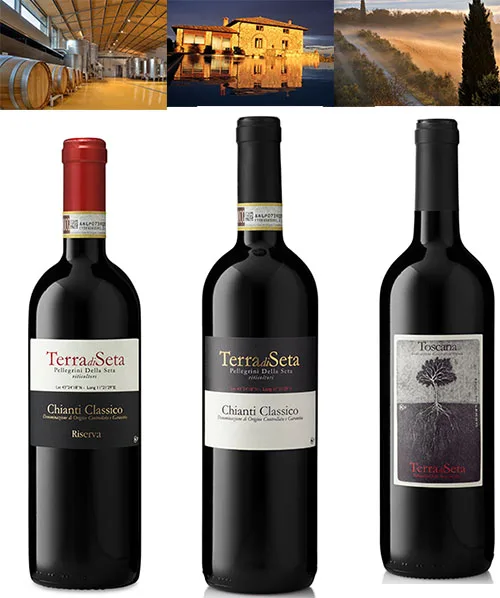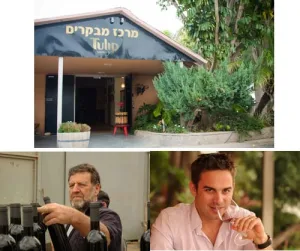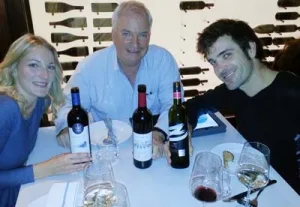Wander around the beautiful vineyards of Israel, and you will hear someone say proudly: ‘now…this is the Tuscany of Israel.’ They may be referring to the plunging mountains and running streams of the Upper Galilee or the terraced vineyards fitting the contoured valleys of the Jerusalem Hills. It could be the sparser more Biblical looking vineyards of the Central Mountains, or even the miracle of green vineyards sprouting in the desert. All beautiful in different ways, but the comparison is always with Tuscany.
The reason is that the famous region in central Italy has become the overriding symbol of all that is beautiful in a wine growing area and the ultimate in wine tourism.
Tuscany’s charms are well-known and its reputation is wholly justified. There you will see vineyards, olive groves and handsome lines of tall cypress trees intermingling in the Tuscan landscape. Funnily enough, that sounds a little like Israel. In the back ground will be rolling hills punctuated by oak woods or even forests, shrouded in morning mists. There will be those beautiful stone walls and attractive villages and towns, usually with an impressive medieval watch tower. Add to that the food and wine. It is certainly heaven on earth.
The Tuscan diet is based on bread, wine and olive oil. That sounds familiar too. Think how many times grain, wine and olive oil are mentioned together in the Bible. They were the staples of the Ancient Israelites too. Psalm 104:15 also brackets them together..’ wine to make glad the heart of man, and oil to make his face shining, and bread giving strength to his heart.’ Wine and olive oil are partners throughout the Mediterranean, never more so than in Tuscany.
However Tuscany is mainly known by its Chianti wines and the Sangiovese grape variety. Here the similarities end. Sangiovese (‘the blood of Jove’) is at its best in Tuscany and most unique in Chianti. There, the wines will have less depth of color to what we are used to. They will be more angular, less fruity and jammy, with prominent tannins and a rasping, refreshing acidity. More cranberry or pomegranate juice, than Ribena. The astringent, sometimes tart Sangiovese goes well with the broader olive oil flavors.
Lately some Tuscans are trying to make their Chiantis more international and globally acceptable, by blending Sangiovese with Cabernet or Merlot and ageing them in small new oak barrels, but others are trying to preserve the authentic Sangiovese taste, with its imperfections. They are perfect food wines but less memorable as competition show off wines that draw attention in the one off tasting.
The Italians have a healthy regard for a wine’s place at the meal. It is always ‘food and wine’, never wine and food. The wine is secondary and has a supporting role. It is an intrinsic part of the meal and knows its place. It is not put on a pedestal as happens elsewhere. We have so much to learn about wine culture. Italy is always a great place to start.
There is more to Tuscany than Chianti. Brunello di Montalcino and Vino Noble di Montepulciano and Super Tuscans like Sassicaia, Solaia and Tignanello also come from this region, with its long history. We think Carmel Winery is an old winery, making wine for over 125 years. Well the famous Tuscan houses of Antinori and Frescobaldi started in the wine trade in the 14th century!
No doubt Italy is one of the greatest wine producing countries, but curiously Italian kosher wines have never really hit the jackpot. I always have the impression that producers there are making commercial kosher wines rather than making the best wine possible that happens to be kosher. This may be semantics perhaps, but there is a difference.
I know Italians make the Bartenura Moscato, which is just about the largest selling kosher brand in the world outside the infamous but big selling Kiddush wine brands, but other kosher table wines don’t excite. Maybe it is the size of the Jewish community, but it does not bother Spain, where Capcanes and Elvi make outstanding kosher wines.
Wine is a troika of three things and I call them the three P’s. The Person, the Place and the Product. There is the wine itself, the place where it was grown and made and the individual that made it. Many of the Italian kosher wines are basically private labels. This means the wine you see is more associated with the importer or distributor that sells it, rather than with any particular winemaker or winery. They have a brand name, and some of them are good, but the people and place aspect is missing. This is a pity because this is what adds context to a wine, and it is what differentiates wine from coca cola.
There is hope. There is a small, quality dedicated winery called Terra di Seta, not far from Siena in the Castelnuovo Berardenga region, whose objective is to make quality, authentic Chianti Classico wines, that ‘just happen’ also to be kosher.
Chianti Classico is the heart of Tuscany and the heart of Italian wine. It is a regulated wine region which is situated between Florence and Siena, two places that reek of the history of art and wine. The difference between Chianti Classico asnd Chianti is purely geographical, though the locals fiercely protect the uniqueness of the Classico region as being superior to the wider geographical region. For proof look for the black rooster which is displayed on the label or capsule to denote an authentic Chianti Classico wine.
Terra di Seta is owned by Daniele Della Seta and his wife, Maria Pellegrini. The Della Setas are an ancient Jewish family that came from Rome. The Pellegrinis are a Tuscan family with three generations of experience in wine. They run a beautiful estate. The word Terra means land or earth and Seta, the family name, means silk. This is a wine which is all about people and place.
In 2001 the family bought the winery building and vineyards. They refurbished the winery, and in 2008 decided to dedicate all their production to kosher wine. Their winemaker is the respected Enrico Paternoster.
Daniele proudly claims his objective is to make high quality Chianti Classico wine, which is also kosher. It is the only winery dedicated 100% to kosher wine in Tuscany.
They have 15 hectares of vineyards, (150 dunams), which are more than 500 meters above sea level. The original vineyards they inherited were 35 to 40 years old, but they have been gradually replacing them since 2002. They only use their own grapes and make about 40,000 bottles of which eighty percent is sold in export.
They also produce olive oil and honey. Their estate is organic. That is to say their vineyard is organically grown. I always think that organic or self-sustainable vineyards go well with kosher wine. The concepts complement each other and I wish more Israeli vineyards chose the self-sustainable or organic route.
Terra di Seta is not only flying the flag of Chianti Classico, but also Italian kosher wines. The wines represent a region and a wine style that is more local than international. These are wines with a soul and a sense of place. I will be watching their progress with interest.
The wines I tasted were as follows:
Toscana Rosso, Terra di Seta 2012
I liked this. Very Sangiovese. Pale colored red, with a tinge of orange brown. A little thin with red cherry fruit, a touch of sourness and spice and very good acidity. A wine to drink chilled. Fun wine, good value.
Price: NIS 70
Chianti Classico, Terra di Seta 2009
This in the modern way has a 5% boost of Cabernet Sauvignon. It has the classic Sangiovese sour cherry nose with aromas of plums, ripe berries but was perhaps less knitted together than the other samples I tasted. I certainly look forward to the next vintage.
Price: NIS 110
Chianti Classico Riserva, Terra di Seta 2010
Fuller bodied version. Aromas of sour black cherries, a Mediterranean herbal character with a whiff of white pepper and spice against a backdrop of sweetish oak. A well-balanced wine, which adheres well to the standards expected, by traditional lovers of Sangiovese. Firstly enticing, then satisfying and finally, refreshing.
Price: NIS 170












